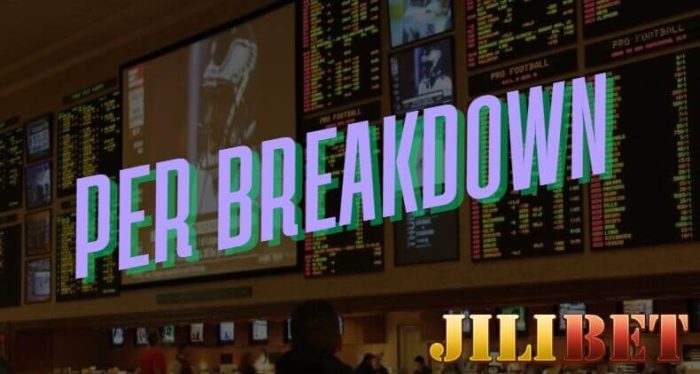Betting on sports—whether it’s just for fun or serious business—is all about finding the right edge. On platforms like jilibet, savvy bettors are always on the lookout for that hidden gem of information that can tilt the odds in their favor. One of the most underrated yet powerful metrics in betting is game tempo. A fast-paced game doesn’t just look more exciting on screen—it also opens up golden opportunities for sharp players.
Beyond team stats and historical trends, tempo plays a huge role in shaping the outcome of bets. This article will show you how to use tempo data to find value in totals (Over/Unders), spreads, player props, and even live bets. Whether the game is running-and-gunning or crawling at a snail’s pace, the speed of play directly affects your betting strategy—and potentially, your bankroll.
What Exactly Is Game Tempo?
Game tempo refers to the pace and rhythm of a match. It includes how often plays happen, how long possessions last, and the overall energy level of the game. Fast-paced games are all about quick possessions, constant movement, and end-to-end action. Slower games, on the other hand, are more calculated, with teams taking their time and limiting opportunities.

In basketball specifically, tempo is often measured by the number of possessions per game. The faster the tempo, the more scoring opportunities, which directly impacts:
- Game totals (Over/Under)
- Player props
- Live line movement
| Pace | Game Style | Betting Impact |
| Fast | Run-and-gun | Higher totals, more scoring |
| Slow | Half-court grind | Lower totals, tight games |
Knowing a team’s typical pace is essential when evaluating bets—it’s one of those “invisible stats” that makes all the difference.
Totals Betting: Tempo Sets the Scoring Ceiling
Tempo directly affects how many points are scored. Fast-paced games usually mean more possessions, which usually means more buckets, making the Over more likely. On the flip side, slow-paced games are typically defensive and grindy—perfect for the Under.
Sportsbooks know this too, so they adjust the lines accordingly. But here’s the catch: even one team’s tempo changing—maybe due to an injury or lineup shift—can throw the whole line off. If you can spot that before the book adjusts, there’s real profit to be made.
Quarter/Half Bets: Zoom In on Tempo Trends
Tempo isn’t just a full-game stat—it fluctuates quarter by quarter. Some teams come out hot in the first, then slow it down later. By analyzing first-quarter pace and scoring averages, you can find value where the oddsmakers miss.
Analyze:
- 1st Quarter pace rating vs. full game.
- Coaching style (some emphasize fast starts).
- Bench depth (fatigue changes pace late in games).
Sometimes, the best opportunities are in the margins—when you bet on a quick start or a slow finish based on historical patterns.
Live Betting: Ride the Tempo Swings
Tempo shifts can happen in real time, and live lines often lag behind those changes. That’s your chance to strike.
A sudden increase or drop in pace—say a star player gets injured or hits foul trouble—can completely shift scoring projections. If you’re watching closely, you can get ahead of the books and grab value on live Over/Under bets before they adjust.
Player Props: Tempo = More Touches, More Stats
More possessions mean more opportunities across the board:
- More shot attempts
- More rebounds
- More assists
When a fast-paced game inflates stat lines, player prop markets often don’t react fast enough. A line that looks “just right” under normal pace could become a +EV (positive expected value) play in a high-tempo matchup.
Clash of Styles: Who Controls the Pace?
When a fast team plays a slow team, who sets the tempo? That’s the million-dollar question.
Understanding who dictates pace is the core of smart betting—especially in playoff scenarios where slow teams often impose their will. These are perfect situations for betting Unders or backing the underdog if the pace suits them.
Identifying pace-dominant teams and how they affect the matchup is a critical skill. It tells you not just what might happen, but how the game will unfold.
Advanced Tip: Calculate Your Own Projected Score
Want to get really technical? Try this formula:
Projected Points = (Team A Pace + Team B Pace) / 2 * Offensive Efficiency
Example:
- Pace = 100 possessions
- Offensive Efficiency = 1.1 points per possession
- Projected Total = 100 * 2 * 1.1 = 220 points
Compare your number to the sportsbook’s Over/Under line. If you’ve got 220 and the line is 229.5—smash the Under.
Doing your own math might sound intense, but it gives you a serious edge—especially when the book is off.
Final Thoughts: Master the Tempo, Master Your Bets
Game tempo is one of the most powerful and underutilized tools in the bettor’s toolkit. Whether you’re watching for tactical adjustments, analyzing team stats, or reacting live, understanding pace helps you see the game differently.
Don’t just look at surface stats. Don’t bet with your gut. Tempo is what truly drives scoring, outcomes, and the line movement that matters.
Next time you place a bet, remember this: read the tempo, and you just might rewrite your fate.


